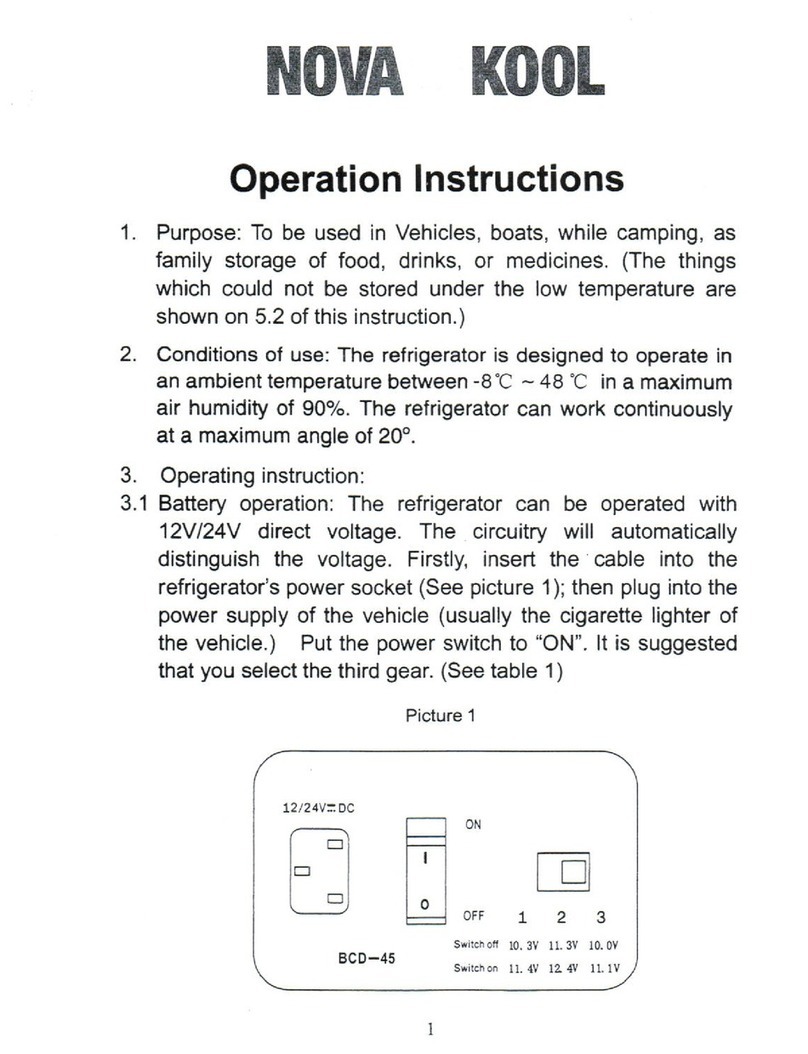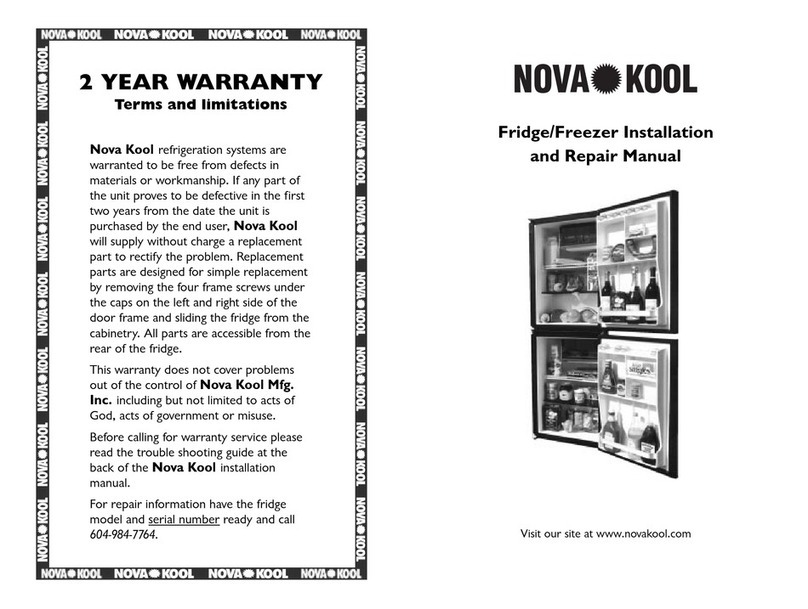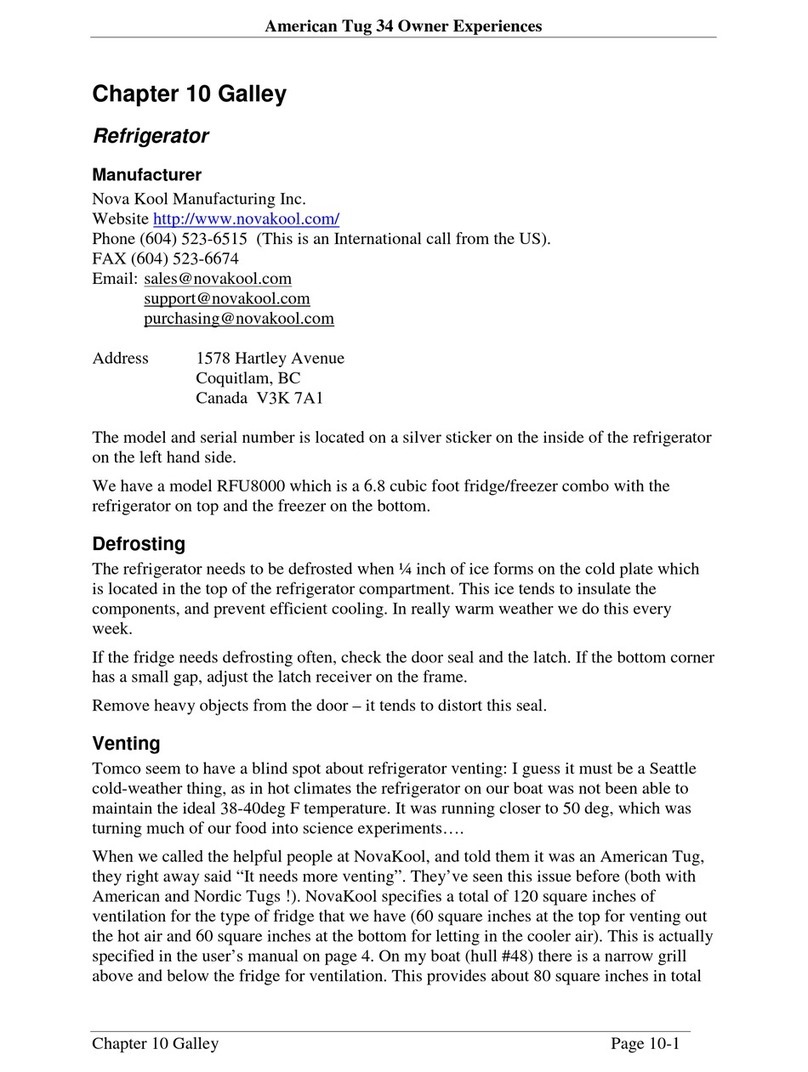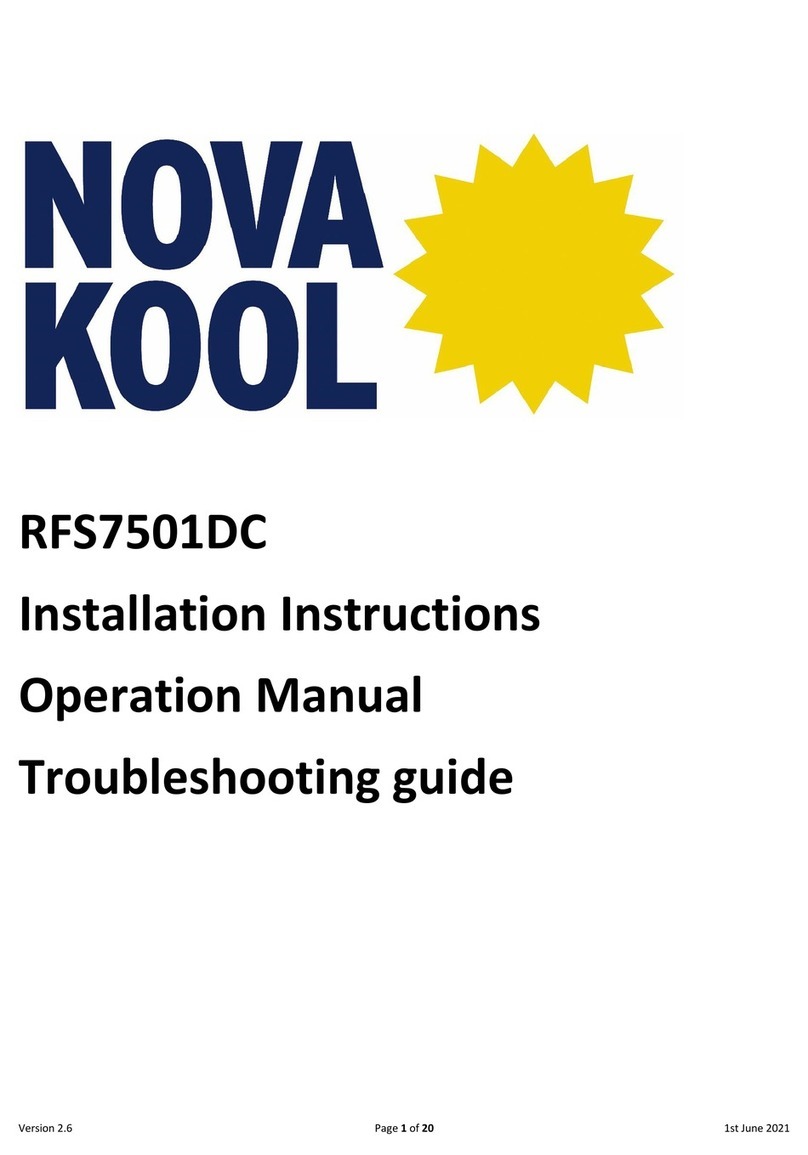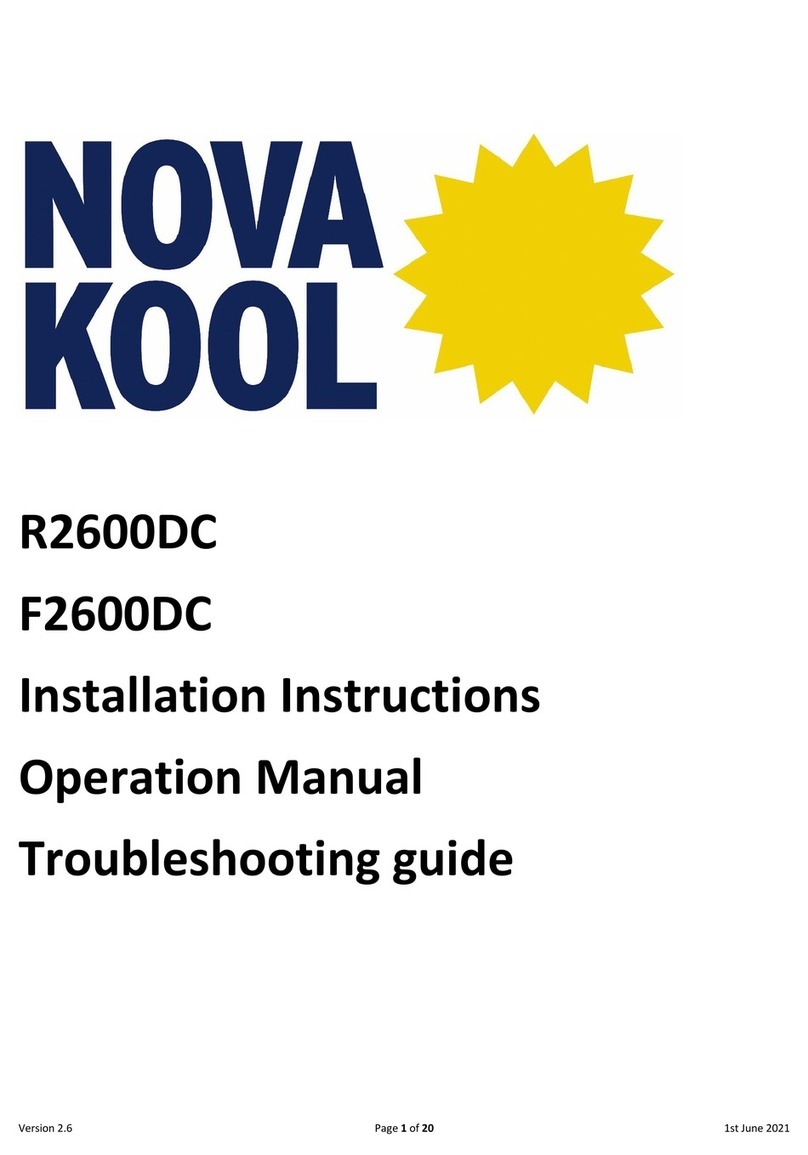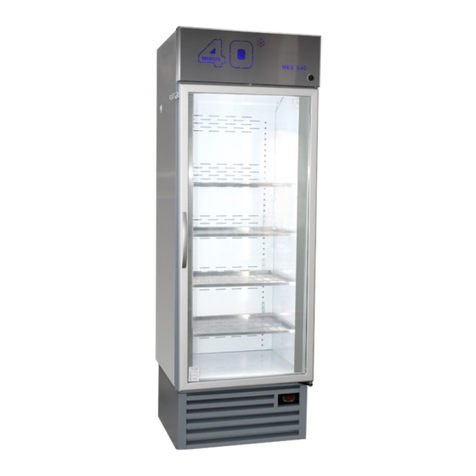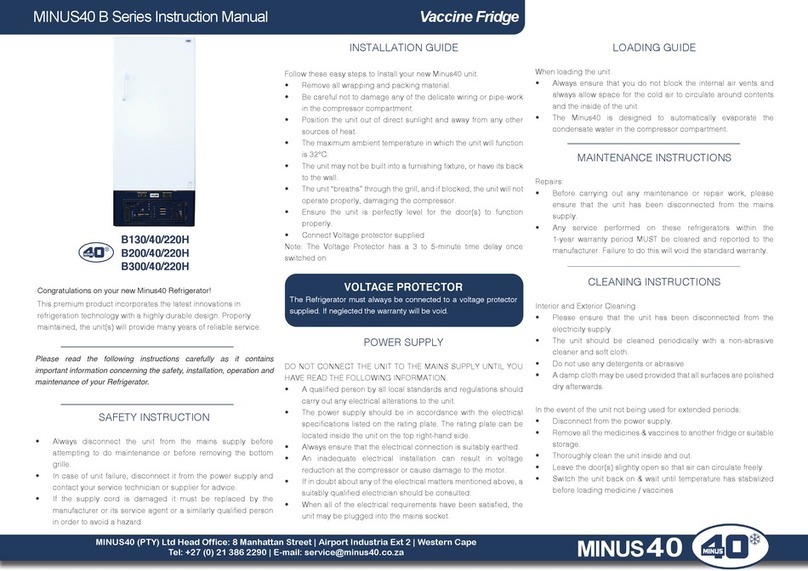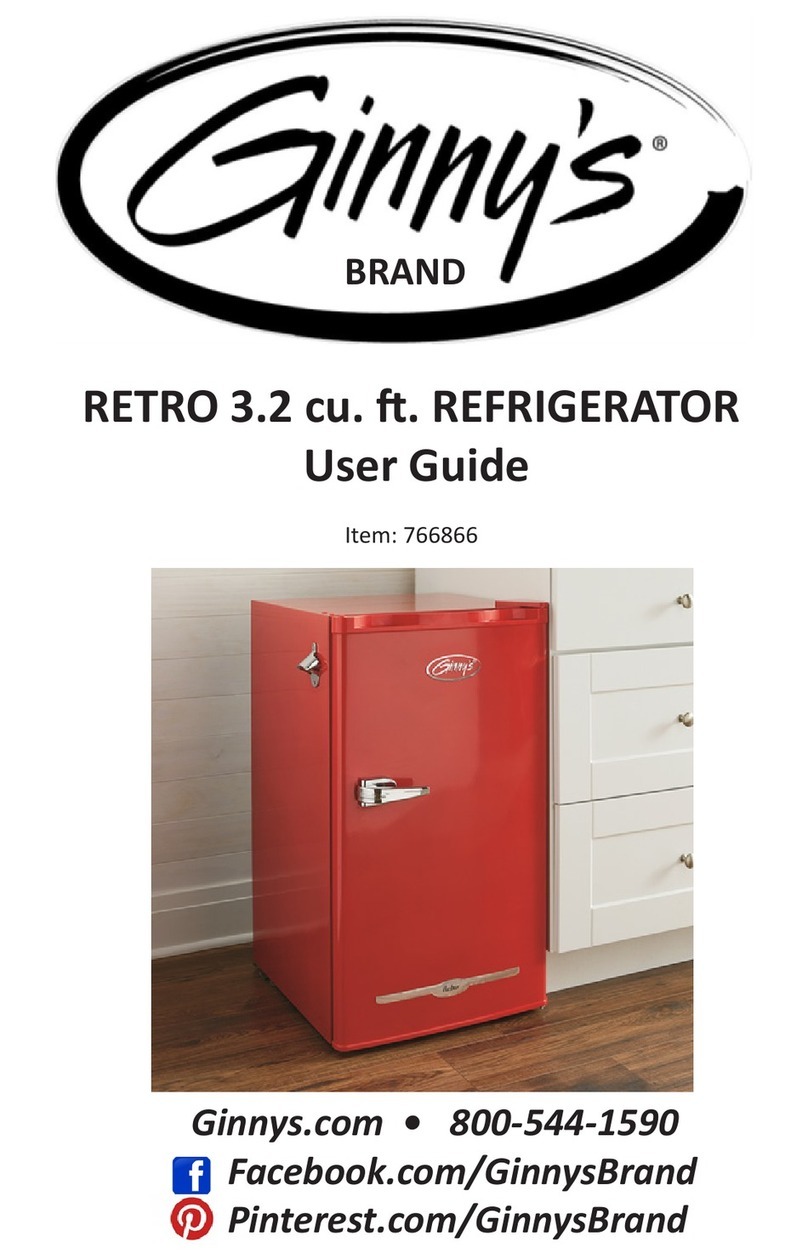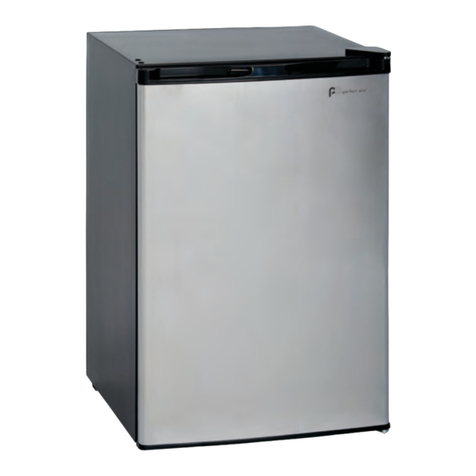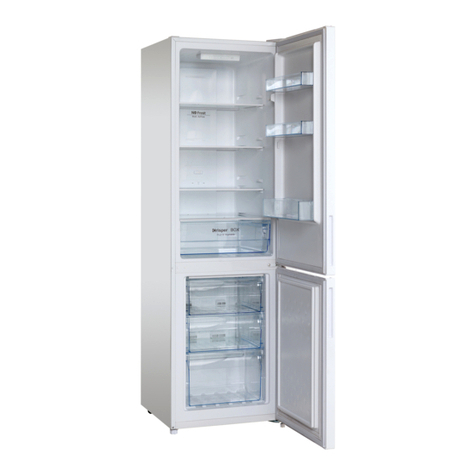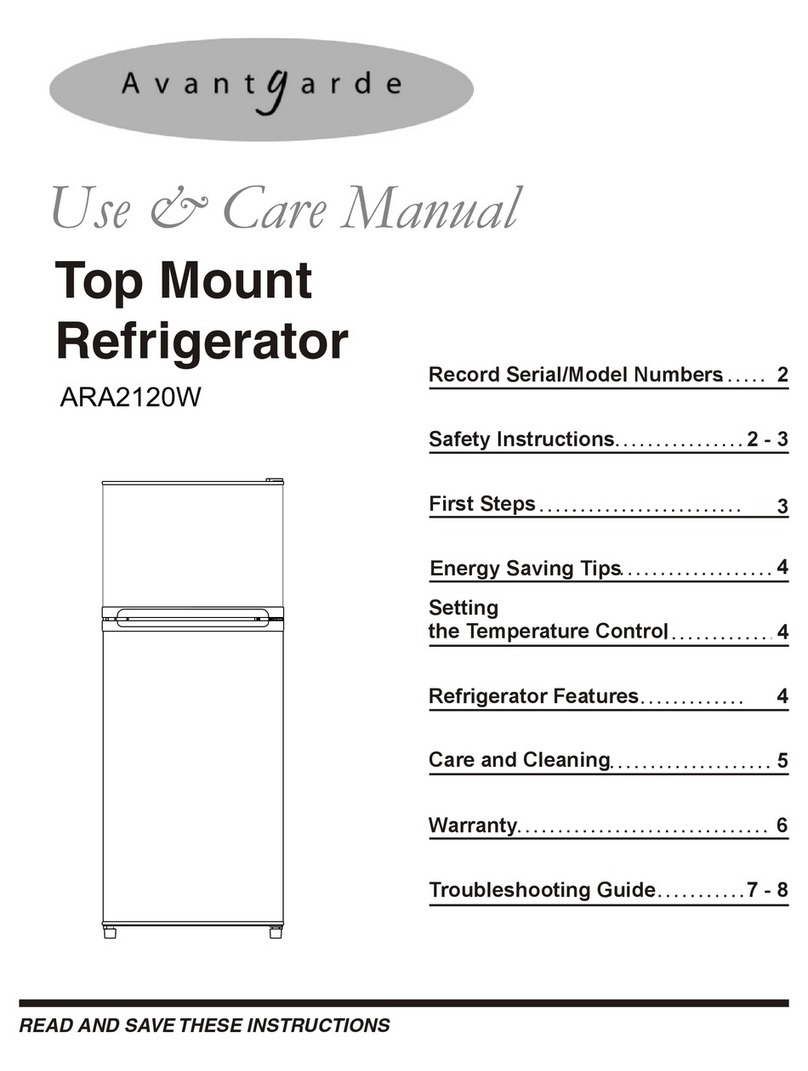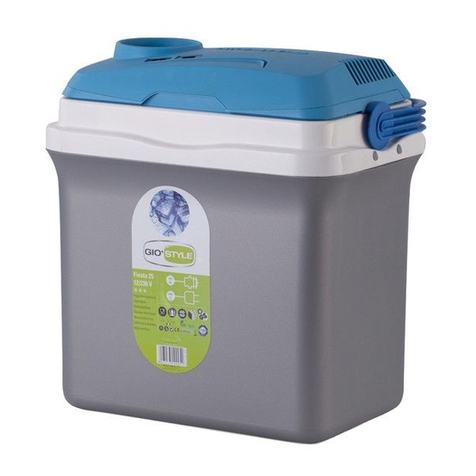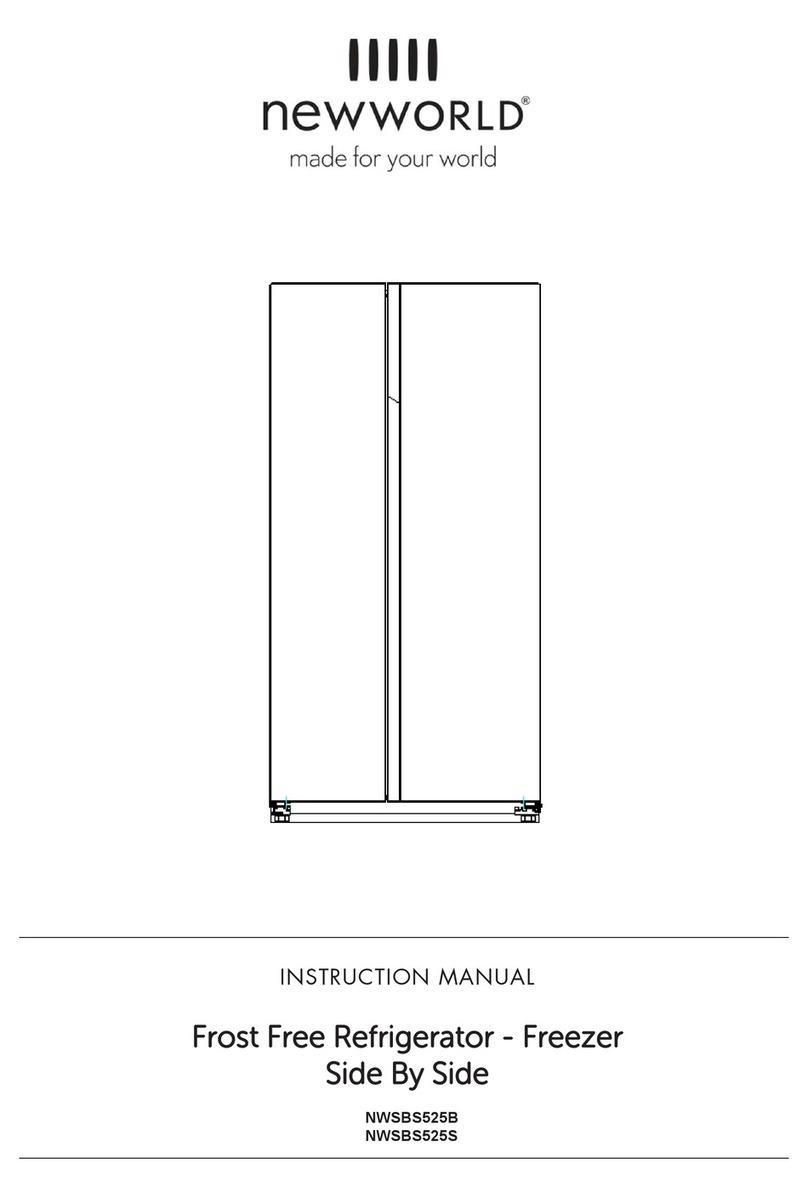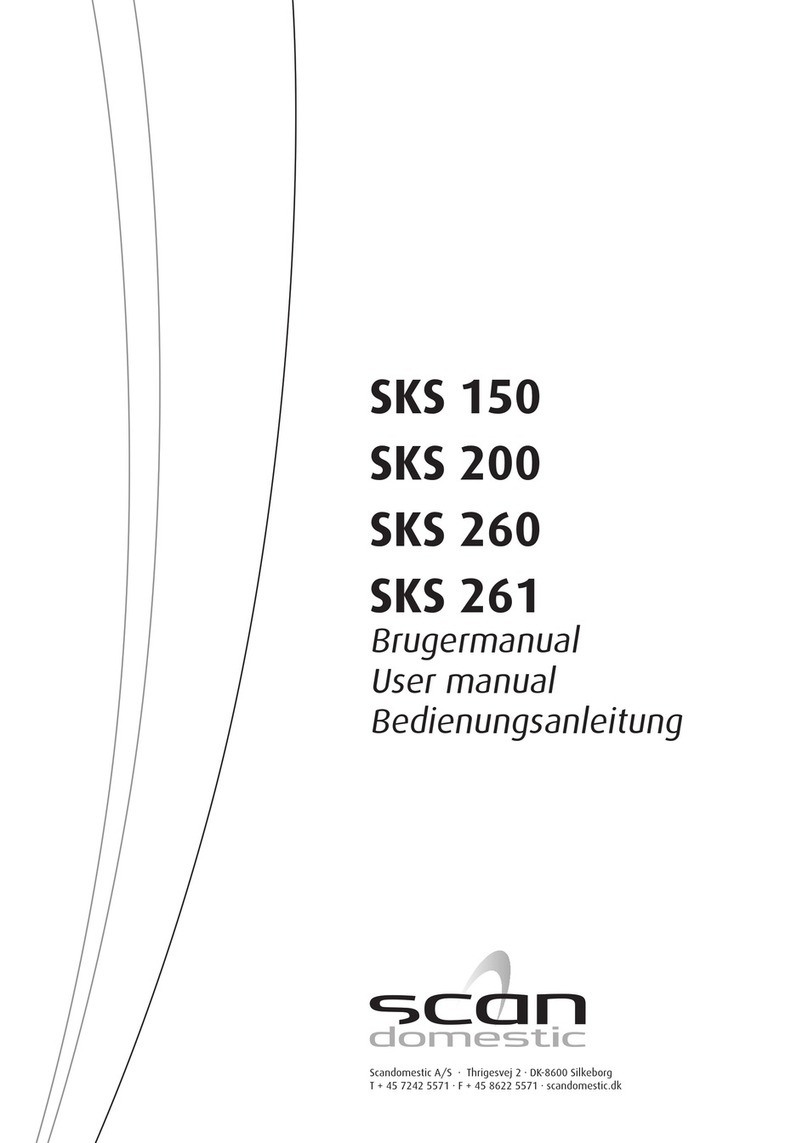Nova Kool 6200 Series User manual

Version 2.6 Page 1of 20 1st June 2021
6200 Series
&
6800 Series
Installation Instructions
Operation Manual
Troubleshooting guide

Version 2.6 Page 2of 20 1st June 2021
NOTES:
____________________________________________________
____________________________________________________
____________________________________________________
____________________________________________________
____________________________________________________
____________________________________________________
____________________________________________________
____________________________________________________
____________________________________________________
____________________________________________________
____________________________________________________
____________________________________________________
____________________________________________________
____________________________________________________
____________________________________________________
____________________________________________________
____________________________________________________
____________________________________________________
____________________________________________________
____________________________________________________
____________________________________________________
____________________________________________________
____________________________________________________
____________________________________________________
____________________________________________________
____________________________________________________
____________________________________________________

Version 2.6 Page 3of 20 1st June 2021
Thank you for choosing Nova Kool for your refrigeration needs.
Since 1985, Nova Kool has been providing quality DC & AC/DC products for
mobile, off power grid and energy conscious installations around the world. We
are factory fitted in the premium brand RV’s and Yachts through-out the
western world.
Each unit goes through a battery of tests to ensure strict compliance with our
quality policy “Strive for continual improvement of all business processes while
involving all associates in the management of quality”. Your unit has been run
tested at the plant for a minimum of 12hrs, followed by a series of inspections
and electrical tests to ensure the quality, the reliability and the safety of your
unit.
All Nova Kool units are covered by 12 month parts & labour warranty and an
additional 12 months parts only warranty that commences upon delivery of the
unit to the end user customer. Please see our warranty terms and conditions on
page 14
Please take the time to fill in the information below, unit model and serial
number can be found on the inside of your new refrigerator. This will help when
making contact for service or warranty information.
Model #______________________________________
Serial #_______________________________________
Date of Purchase: ______________________________
Date of Delivery of Vessel or Vehicle: ___________________________
(Or date of fitting; if applicable)
Selling dealer: _________________________________
Nova Kool fridges sold in Australia are warranted by Ocean Solutions
International. Nova Kool Manufacturing warranty does not apply to units that
Ocean Solutions International distribute.
Please see our warranty terms and conditions on page 14

Version 2.6 Page 4of 20 1st June 2021
Table of contents
1. Safety …………………………………………………. ..
5
2.
General Safety …………………………………….
..
5
3. Intended Use ……………………………………… ..
5
4.
Refrigeration Process ………………………….
..
7
5.
Installing & Connecting the Refrigerator
..
10
6.
Installation Notes …..…………………………..
..
10
7. Use & Care …………………………………………. ..
13
8.
Final Notes ………………………………………….
..
14
9.
Troubleshooting ………………………………….
..
15
10.
Warranty ……………………………………………. ..
16
11.
Parts List …………………………………………….. 17
12.
Dimension guide ………………………………… 19

Version 2.6 Page 5of 20 1st June 2021
1 Safety
The manufacturer and distributor accept no liability for damage or personal harm as the
result of
•Poor installation
•Incorrect installation
•Incorrect usage, or modifications to the unit.
•Failure of equipment connected to the unit
•Equipment failure as a result of connecting the unit to equipment
•Unit failure as a result of connecting to equipment not designed for connection to
the unit.
•Use of the unit for purposes other than described in the manual
2 General safety
•Any use of 240volts to power the unit requires a licensed and qualified electrical
trades person to fit, modify, or remove the unit.
•240 volts AC (AC Mains power) can cause serious injury or death.
•240 volts AC can and does become more dangerous in wet and high humidity areas
like marine vessels or during rainy periods.
•Turn off circuit breakers and remove plugs connected to AC Mains power before
doing any maintenance or repairs to the unit.
•Do not operate the unit if there is any known, or visible damage.
•This unit may only be repaired by qualified and certified trades people. Poor or
inadequate repairs may cause serious hazards or injury.
•Cleaning and maintenance must be carried out by adults only. Children cleaning the
unit under supervision of an adult is at the risk of the adult.
•The unit is not a toy. Do not let children play with the unit.
•Do not close yourself or others into a fridge. Can cause death through asphyxiation.
3 Intended usage & what to expect.
This unit is non-commercial and non-industrial use. Designed to be fitted within
•Caravan
•Mobile home
•Recreational vehicle
•Boat or pleasure craft.
•Camper Trailer
•Vehicle
•Off grid cabin/hut/villa/shed

Version 2.6 Page 6of 20 1st June 2021
The unit is designed to connect to 12v or 24v volt DC systems, and if the optional multi-
voltage module is fitted, can be connected to 110v or 240v AC. The system will prioritise AC
over DC if the system is connected to both AC and DC power sources.
The units are NOT an environment specific design. The design is based purely on being a
Mobile DC fridge/freezer with no intent for it to function as a long storage freezer, or to run
in extreme and harsh environments.
The unit will cool or freeze the product within the interior, based on the type of unit
purchased.
Fridge only units will cool product down to 1oCelsius at 32oCelsius ambient temperatures.
Freezer only units are holding freezers only and will hold product at -8oto -12oCelsius at 32
Celsius ambient temperatures.
Single door Fridge Freezers units will achieve 1oCelsius. The Freezer temperature is then a
balance temperature of with the expectation of -8oto -12oCelsius or lower at 32oCelsius
ambient temperatures.
Dual door single compressor Fridge Freezers will achieve to 1oCelsius in the fridge and
down to -12oCelsius in the freezer or lower at 32oCelsius ambient temperatures.
Once the unit is at temperature, power usage will vary based on ambient temperature and
set temperature of the thermostat. The higher the ambient temperature, the more your
unit will work, and the longer it will take to “pull down” to temperature.
You should expect between 40% and 100% cycle time once your unit is at temperature.
In all units (except for the dual compressor units), the Fridge temperature is what is set by
the thermostat. The Freezer area temperature is a “by-product” of the fridge set
temperature. It is possible to get extremely cold temperatures in the Freezer in most dual
door units, but this will result in sub zero temperatures in the Fridge compartment. This is
not a fault, it is a balance or compromise to satisfy either the fridge compartment, or the
freezer compartment.
If this manual is missing information on installation criteria, and this leads to a warranty
claim, no warranty will be provided. Nova Kool and Ocean Solutions International expect
the installation to be carried out by professionals. Information is only provided in an
attempt to prevent issues from owner / installers. Nova Kool and Ocean Solutions
International strongly recommend installation by qualified refrigeration technicians, and
electricians.

Version 2.6 Page 7of 20 1st June 2021
4 REFRIGERATION PROCESS
Refrigeration simplified. The hardest thing for most people to understand is refrigeration is the removal of
heat. It is not the cooling of something. This then implies that everything has heat. And this is true for
organic objects. ie. Food. There is a lot more to it, but to help understand your refrigerator. (The below is
copied from http://www.air-conditioning-and-refrigeration-guide.com/refrigeration-cycle.html)
We'll discuss the refrigeration cycle using this cycle diagram.
Component #1 is the compressor.
It takes refrigerant vapor in from the low-pressure side of the circuit, and discharges it at a much higher
pressure into the high pressure side of the circuit.
The compressor is the heart of the system; it keeps the refrigerant flowing through the system at specific
rates of flow, and at specific pressures.
The rate of flow through the system will depend on the size of the unit, and the operating pressures will
depend on the refrigerant being used and the desired evaporator temperature.
Component #2 in this refrigeration cycle diagram is the condenser. The red dots inside the piping represent
discharge vapor. The solid red colour represents high pressure liquid refrigerant.
Most air-cooled refrigeration systems are designed so that the refrigerant will condense at a temperature
about 14°C to 17°C above the ambient air temperature around the condenser. Most water-cooled systems
are designed for 24°C to 35°C entering condenser water temperature, with 30°C being the design
temperature. With water cooled condensers, refrigerant should condense at a temperature about 5°C
above leaving condensing water temperature, or 11°C above entering condenser water temperature.

Version 2.6 Page 8of 20 1st June 2021
When the hot refrigerant vapor discharged from the compressor travels through the condenser, the cool
air or water flowing through the condenser coil absorbs enough heat from the vapor to cause it to
condense.
If the outside air temperature is 27° C, an air cooled system is designed so that the temperature of the
refrigerant, right at the point where it first condenses, will be about 40°C to 46°C. If the entering condenser
water temperature is 30°C, a water-cooled system is designed so that the temperature of the refrigerant,
right at the point where it first condenses, will be about 40°C.
Why do we want the refrigerant to condense at this relatively high temperature? So that the air or water
flowing through the condenser will be very cold relative to the temperature of the discharge vapor, Which
will allow the heat energy in the vapor to move into that relatively cold air or water, And cause the
refrigerant to condense.
At this stage in the refrigeration cycle, high pressure liquid refrigerant will flow down the liquid line,
through a filter drier that is designed to prevent contaminants from flowing through the system, and on to
the metering device.
The metering device, component #3 on this refrigeration cycle diagram, is the dividing point between the
high pressure and low pressure sides of the system, And is designed to maintain a specific rate of flow of
refrigerant into the low side of the system.
If the wrong capacity of metering device is used, or if there is a problem with the metering device, An
incorrect quantity of refrigerant will flow into the evaporator.
When the high-pressure liquid refrigerant passes through the metering device, its pressure will drop to a
low pressure that will be equivalent to about 6°C to 9°C below the design temperature of the evaporator. It
starts evaporating immediately, and it wouldn't be too inaccurate to imagine it acting like warm soda when
you shake the bottle and pop the top off. It shoots out into the evaporator foaming, bubbling, and boiling,
And remember, it's at a low pressure, so for a freezer it would be boiling at about -23°C to -26°C and for a
medium temperature refrigerator it would be boiling at about -4°C.
And that brings us to the evaporator, component #4 in the refrigeration cycle diagram. There will be
relatively warm air (or water, if the unit is an ice machine) flowing over the evaporator coil.
The refrigeration system is designed so that the refrigerant will evaporate in the evaporator at a
temperature that's about 6°C to 9°C below the temperature setting if it's a refrigerator or freezer, and the
temperature will drop to around -18°C in the evaporator of an ice machine or ice cream machine.
The system is designed so that the heat in the relatively warm air flowing over the evaporator will move
into the cold evaporating refrigerant.
This process will continue to cool the air that's flowing over the evaporator until it reaches the design set
point or thermostat setting.
So, when you turn on the refrigerator, freezer, ice machine or ice cream machine, the system is designed
so that the evaporator will stay colder than whatever it's cooling, and will continuously remove heat from
it and cool it.

Version 2.6 Page 9of 20 1st June 2021
The Nova Kool,and in fact all compressor-based refrigeration systems use the same
process. Each system then makes minor adjustments to suit their internal and external
requirements.
Being a unit that usually gets installed into 4-wheel drives, off-road RV’s, Camper-trailers,
Caravans, and boats, the fridges are exposed, and subjected to extreme environments as
compared to that of a normal refrigerator. Your in-home refrigerator sits still on a flat
stable surface, and has lots of controls, moving parts, and hidden evaporators and
condensers. It also does not have restrictive ventilation preventing good airflow over the
condenser to help remove heat.
As a test, place a thermometer in the cavity behind your Nova Kool fridge while its
operating in the middle of the day, and compare the temperatures explained in the diagram
to the temperatures on your thermometer.
Nova Kool’s internals are designed to be simple, robust and to use natural convection as
well as being field repairable. Placing a fan inside the fridge upsets this convection, and
your system will fail to perform properly. The internals have also been designed so that
parts can be replaced. There are no hidden pipes, controls or wiring which can negate the
possibility of a repair. The system does not employ auto-defrost systems. These require a
moving solenoid and a way of removing liquid from the compartment. Currently there are
no solenoids on the market designed to be bounced around, and using an electrical heater
means using more power, and if the electrical controller locks into the on position, the
internal of your fridge will melt. (If you have a small old fridge you want to throw out, try
placing a 20 watt or 30 watt incandescent bulb (traditional 240 volt light bulb) into the
fridge, and leave it turned on with the door shut for a few hours. Make sure you do this in
an area that is open, and where a potential fire will not cause harm.)
The external casing (rear)of your Nova Kool fridge, may look “agricultural” and or scratched
and dinted. These are manufacturing marks The original design parameters were based on
recessing the unit into a cavity until the mounting flange is against the timber you are
mounting into. The door sits proud of the mounting flange unless the installation design
rebates the mounting flange into the cavity. The standard* black door panel can be
replaced with a panel with a colour or design to match your décor. *(The 1200 series &
5800 series are supplied with brushed stainless-steel panels)

Version 2.6 Page 10 of 20 1st June 2021
5 Installation
Preparation.
•Ensure where you are going to make your cut-out is solid and will cope with the
weight of the fridge being mounted to it.
•Ensure the area behind the fridge can have appropriately sized vents cut into the wall
or has sufficient ventilation to provide the enough airflow over the condenser.
600 square centimetres is absolute minimum required below the condenser, and
600 square centimetres is absolute minimum required above the condenser. They
should be the same size, with the top being permitted to be approx. 10% larger.
•Ensure the cable sizing, and electric safety’s meet the requirements to run your
fridge.
•Ensure the position will permit the unit to be as level as possible (upright), permitting
an even amount of available “layover/tilt” angle due to van, RV, boat movement.
Nova Kool and Ocean Solutions International recommend you employ a professional to
initially fit your fridge to ensure correct operation. If your installation falls outside of the
minimal installation parameters, your Nova Kool fridge cannot be expected to function
correctly. Nova Kool or Ocean Solutions International are not liable for warranty failures
attributed to incorrect and/or poor installation.
OVER 90% OF ALL WARRANTY CLAIMS ARE ATTRIBUTED TO POOR INSTALLATION. THE
MOST COMMON PROBLEMS ARE POOR ELECTRICAL INSTALLATION AND INADEQUATE
VENTILATION.
6 Installation Notes
•With vent covers, the holes in the vent covers the square cm size of the holes needs
to be calculated, and the number of holes known to be able to provide accurate
square cm surface area of the ventilation hole. Sometimes this is provided on
ventilation cover packaging. Do not use different sized vents for lower and upper
vents as this will create a volume imbalance for airflow.
•Lining the walls beside your refrigerator can, and most likely will cause your
refrigerator to condensate heavily. Do this at your own risk. Nova Kool do not
recommend lining your walls beside your refrigerator and are not liable for any
moisture or water damage caused by normal refrigerator operation.
•Never place additional fan or fans for assisted ventilation on the “air-out” vent,
ironically this reduces the air flow as it disrupts natural convection which is how a
lower and upper vent function. Should you believe additional fans are required a
better location is below your condenser coils to assist in pushing the cooler air from
your lower vent over the coils at a faster rate. This may aid in the refrigeration

Version 2.6 Page 11 of 20 1st June 2021
process by moving the extracted heat from the condenser more quickly. The upper
vent should remain unobstructed.
•The ideal area to pull the air into the lower section of your cavity is from the inside of
your RV/Caravan/Boat. This is the coolest air, and it can also reduce the dust ingress
into the cavity. Dust on the fan and condenser will reduce its efficiency. This will not
alter the minimum air in volume; 600 square centimetres of clear air space.
•Fan circulation within the area where the condenser is located, will not improve
operation. Air flow through the whole compartment, to ensure cooler air will always
be entering the compartment, does assist.
•On certain days, the ambient weather may cause your unit to condensate. (Casing
and mounting frame) This is normal in high humidity conditions.
•When temperatures exceed 38o C, the unit’s performance may begin to deteriorate.
This is because the heat transfer from the condenser to the air will become less
efficient as the temperature increases. Heat will also penetrate the walls of the
refrigerator more.
Electrical Cable Sizing
Cable size in MM²
12vDC Max. Cable Length
24vDC Max. Cable Length
4
4
6
6
8
10
10
12
14
The above cables are length in metres. We strongly recommend that the smallest cable
used for lengths shorter than 4 metres is 4mm², with a preference to only using 6mm²
cable.
1. Mark up and prepare to make your cut-out. DOUBLE CHECK THE DIMENSIONS. USE
THE DIMENSIONS ON PAGE 18 AS A GUIDE ONLY. CHECK THE DIMENSIONS
YOURSELF SO YOU DO NOT MAKE INCORRECT CUTS. WE WILL NOT BE RESPONSIBLE
IF THE DIMENSIONS ARE INCORRECT. Your model details will be on the label on the
inside of your fridge, it is located on either the upper left or upper right side of the
walls. This is also where you can find your serial number. You should note these
down in this manual and keep this manual handy.
2. Check the sizes on the chart match closely the size of the refrigerator. You should
expect approx. 5 mm difference in size on the chart to the external dimensions of the
fridge box. Measure 2, 3, or more times, and recheck before making your cuts. (Nova
Kool is not liable for incorrectly measured cut-outs resulting in difficulties in being
able to install your unit).
3. When cutting out your ventilation holes, ensure there are no structural beams or
electrical cables where you are making the cut. Make sure the ventilation holes are of
sufficient size to allow the fridge to breath properly. (Nova Kool is not liable for
incorrect /inadequate ventilation or holes cut in the incorrect position)

Version 2.6 Page 12 of 20 1st June 2021
4. When running the power supply cable from the battery to the rear of the fridge
compartment follow the shortest possible route. Ensure there is enough cable for
you to connect the refrigerator when the unit is external to the cavity. Ensure that
you have a fuse fitted very close to the battery, no more than 15 cm from the battery
terminal. (Nova Kool or Ocean Solutions International are not liable for incorrect or
poor electrical wiring in your installation)
5. Ensure the fuse is out in your wiring and your wiring is not connected to the battery.
6. Connect the refrigerator side of your power supply cables to the refrigerator
electrical terminals, located on the electronic control module (ECU).
7. Place refrigerator into the cut-out, ensuring not to pinch or jam the cables.
8. Screw the refrigerator into the cut-out by fixing the screws at an angle slightly
pointing away from the refrigerator, in the screw holes in the mounting flange, and
tighten the screws to hold the refrigerator firmly in place.
9. Look through your ventilation holes and ensure all your cables are clear of any
obstruction points, and all cable connectors are firm. It is advisable to loop your
power input cables above the ECU and cable tie the loop so that there is no
downward pressure on the power supply input cables (vibration and downward
weight pressure when travelling can loosen and sometimes disconnect your cabling
from the ECU terminals which results in a non-powered appliance.
10. Fit your ventilation covers as per the ventilation covers instructions.
11. If you have a mechanical thermostat, open the refrigerator door, and turn the
thermostat dial to “0”
12. Connect the cable to the battery, and place the fuse into the fuse holder
13. Open your refrigerator door and turn your thermostat to between ‘3’ and ‘4’. For
double door units we recommend a starting point of ‘4.5’ on the thermostat.
Your refrigerator will now be running and starting to cool down. This can take several
hours, and best to leave over night to allow the temperature to settle. It’s a good idea to
have a thermometer (Or better still, a temperature and humidity data logger) sitting on the
bottom shelf and read it in the morning. This will assist you in setting the correct
temperature of your refrigerator.
IMPORTANT: IF YOU ARE UNCLEAR ABOUT ANY OF THE TERMINOLOGY OR INFORMATION
PROVIDED HERE, SEEK A PROFESSIONAL TO INSTALL YOUR FRIDGE UNIT.

Version 2.6 Page 13 of 20 1st June 2021
7 Use and care
While your Nova Kool unit is quite simple, the following will assist you getting the best
performance of your unit.
•Remove the drip tray at the top of unit. Tests have shown up to a 5 degrees Celsius
higher temperature in your fridge cavity if you leave it in.
•Do not let ice build-up on your evaporator. This can give erratic performance and can
cause the compressor to cut-out when it should be running and visa-versa.
•Check door seals regularly. If you have a faulty door seal, or the door is not sealing
properly, then ice build-up on your evaporator will occur much more quickly.
•Clean your fridge only using warm water with baking soda. DO NOT USE ANY OTHER
CLEANING PRODUCT. It can cause your lining to go brittle or discolour.
•Plan ahead. Turn your unit on several days prior to travelling to let the unit come
down to temperature. The units are not a domestic fridge, where you put kilos of
room temperature food into the fridge to cool it down. Remember the more food
you put in there at ambient temperatures, the more power it will use and the longer
it will take to bring all your warm food down to temperature.
Temperature Control Device - Mechanical thermostat.
The mechanical thermostat is a ”contact” type, and you will see it attached to the
evaporator. These are like the original type of temperature controllers used for years in the
first types of fridges.
There is a large dial with a mark, and an indicator point on the body it is mounted in, to
provide a reference to the 7 numbers on the dial.
The numbers reference 1 as being the warmest set point, and 7 being the coldest. If you
wind it around to 0, this will tell the unit to “turn off”. Turning it around to 7 will tell the
unit to just keep running.
The position will effectively tell the unit to stop at a certain temperature that the
evaporator will get to, not the air temperature of the cavity. If it is a very hot day, and the
fridge is not keeping things as cool as you would like when compared to a normal
temperature day, turning the thermostat to higher positions will not help. The compressor
will already be running all the time. Once ambient temperatures get over about 38 degrees
Celsius, you can expect this to happen.
The challenge with mechanical thermostats is variables. There are some very expensive
ones available, but they suffer the same issue. There are variances with the position, as to
what temperature you will receive.
Some fridges will run at 1 degree Celsius in the fridge at position 3, while an identical unit
right beside it will require position 4.5 to achieve the same.

Version 2.6 Page 14 of 20 1st June 2021
We would suggest with these units you start at position 4.5, and place a thermometer in
the fridge, sitting it on crisper shelf. Keep in mind that the colder you run your fridge area,
the colder your freezer will be.
8 Final Notes
Being refrigeration there are many other contributing factors to issues. We have only
covered the simple ones we get lots of calls about. Most issues are easily resolved, and a lot
of the queries are more an understanding of mobile fridges. These units, while in theory,
may be similar to your home unit, once put into a mobile “tin can” that conducts heat, and
has limited ventilation, and subject to bouncing all over the road or dirt track, completely
changes the functioning dynamics. Throw into the mix, that everyone wants larger internal
volume and minimal room to fit it all in, ALL manufacturers reduce the wall thickness
insulation to try and maximise internal volume, at the expense of heat ingress.
We are always happy to discuss issues you may be experiencing, but unfortunately
sometimes we just can’t alter the laws of physics.
The Nova Kool fridges are not designed to work efficiently at temperatures above about 38
degrees Celsius. They will continue to try and cool, but with the level of heat ingress
through the insulation, the system may struggle to keep up. The warmer it is above these
temperatures the less efficient the system will become.
Currently we are unaware of any mobile/portable fridge that will work efficiently in these
high ambient temperatures. By designing a fridge to work at these higher temperatures,
then they will cause problems at lower temperatures. (Freezing of foods, unstable running
temperatures, short cycling etc)
The Nova Kool unit will provide many years of trouble-free cooling, with minor repairs such
as thermostat failure, or internal light failure (if fitted), or replacing door seals; if correctly
fitted, and properly looked after.
Parts are usually available, if required, out of our Brisbane warehouse, and our team are
happy to assist, as well as help with advice and information in resolving most issues.
We hope you enjoy your fridge.
The Ocean Solutions International Team.

Version 2.6 Page 15 of 20 1st June 2021
9 Troubleshooting
Symptom
Reason/Solution
Unit is running all the time
*-If the section of the evaporator plate
holding the thermostat tube isn’t lightly
frosted the thermostat tube will be sensing
incorrectly.
-
Evaporator has excessive ice, defrost unit to remove ice.
-Condenser is not removing enough heat. Check condenser
cooling is sufficient.
-Fan is not working. Replace fan.
-Faulty thermostat. Replace thermostat
*- Have a refrigeration technician investigate the
possibility of a refrigerant leak.
Fridge not running
-Fan is sticky or stiff. Replace fan
-Voltage too low. If battery voltage at the compressor
module is less than 9.6 volts at startup, it will not start.
-Check your DC power system.
-Check that a connection or cable has not come loose
Fridge not getting cool enough
-Thermostat is set to low. Turn the thermostat to a higher
number. (if at 3 try at 3.5)
-Ambient temperature is high. Open the fridge door less,
and try to improve colling over the condenser.
-Door not sealing properly. Fix door or replace door seal.
Evaporator icing up
-Door is being opened too often. Always limit the number
of times you open the fridge door.
-Door not sealing. Too many heavy products in the door
during travel, or the door is being leaned on when open.
Re-adjust the door to seal.
-Door seal split or damaged. Replace door seal.
(During humid times, the icing up will occur more quickly.
Ie. If you are in Northern Australia during the wet season,
expect to defrost weekly)

Version 2.6 Page 16 of 20 1st June 2021
10 Warranty
Nova Kool Mfg. Inc. warranties products as follows:
One (1) year parts and labour
From the date the end user purchases the Nova Kool unit or the date of purchase of the boat/RV/caravan
which has a new Nova Kool unit installed in it. Proof of sale/purchase is required.
All parts are supplied by Nova Kool Mfg Inc. or it’s agent, by Marine Import Sales Group Pty Ltd T/A Ocean
Solutions International
Authorisation for warranty must be given by Marine Import Sales Group Pty Ltd T/A Ocean Solutions
International for all labour claims.
Second (2nd) year ‘Parts’ warranty only
Nova Kool will warranty all parts for an additional year after the first (1st) year parts and labour warranty.
Parts are supplied at no charge; freight is an additional charge to customer.
All parts are FOB by Marine Import Sales Group Pty Ltd T/A Ocean Solutions International.
Warranty – 1st & 2nd year (general information)
All claims must be submitted in writing noting the model and serial number of the unit you are requesting
warranty on, to Nova Kool/Authorised Distributor. (For claims where the Authorised Distributor has not
contacted the service agent to request warranty work to be performed)
For labour claims which are over one (1) year (12 months) from date of sale or on parts claims which are
over two (2) years (24 months) from date of sale, an official proof of sale/purchase/invoice must be supplied
to Marine Import Sales Group Pty Ltd T/A Ocean Solutions International before warranty will be considered.
Claims outside of the warranty period as stipulated above will be assessed on a case by case basis and any
decision will be made at the discretion of by Marine Import Sales Group Pty Ltd T/A Ocean Solutions
International
Service parts carry a one (1) year warranty from the date of sale. No labour or freight is allowed.
All fridges returning for repair must have a RGA (return goods authorised return) email, which can be requested
by calling by Marine Import Sales Group Pty Ltd T/A Ocean Solutions International.
Warranty - general terms & conditions
1. Warranty is for manufacturing defects only. This does not include poor performance as a result of poor
insulation.
2. All warranty claims must be directed to the original place of purchase. We will not process warranty claims
unless they are through the original reseller.
3. No warranty job is to proceed without an *Authorisation email from Marine Import Sales Group Pty Ltd T/A
Ocean Solutions International. Failure to do so will have the claim rejected, and all payments to the service
provider will be at the fridge owner’s expense.
4. Not all warranty claims are warranty, and the decision is up to the manufacturer and/or their agent. The
repairer is not the manufacturers agent, Ocean Solutions International are the Australian agents.
5. If inspection and/or repairs are made and the claim is found to not be a valid warranty claim, the end-user is
liable for all costs incurred and will be invoiced by the repairer.
6. If the unit is found to be functioning within parameters when tested external to the vehicle, but fails to
function properly within the vehicle, this is not a manufacturing fault of the fridge/freezer and therefore not a
valid warranty claim.
7. The repairer has the right to hold the fridge/freezer until payment has been made in the event the repair is
not warranty.
8. All repairs that are started or completed without our authorisation; all repairs are at the cost of the
fridge/freezer owner, and no re-imbursement claims will be honoured by Nova Kool or Ocean Solutions
International.
Note: In this document the references made to ‘Authorised Distributor’ are to be considered to be the Australian
Distributor of the NOVA KOOL product range; being Marine Import Sales Group, T/A Ocean Solutions
International.

Version 2.4 Page 17 of 20 12th Mar 2021

Version 2.4 Page 18 of 20 12th Mar 2021

Version 2.4 Page 19 of 20 12th Mar 2021
12 DIMENSIONS - GUIDE ONLY
This manual suits for next models
3
Table of contents
Other Nova Kool Refrigerator manuals
Popular Refrigerator manuals by other brands
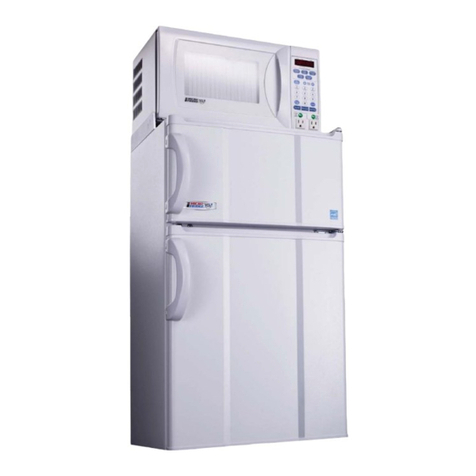
Micro fridge
Micro fridge 2.9MF-7TPW quick guide
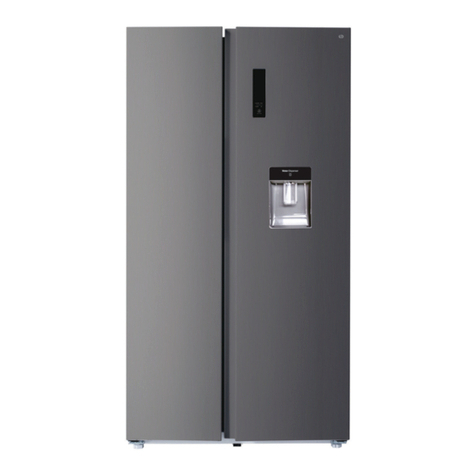
essentiel b
essentiel b ERAVDE180-90v1 user guide

V-ZUG
V-ZUG Futura KFi eco installation instructions
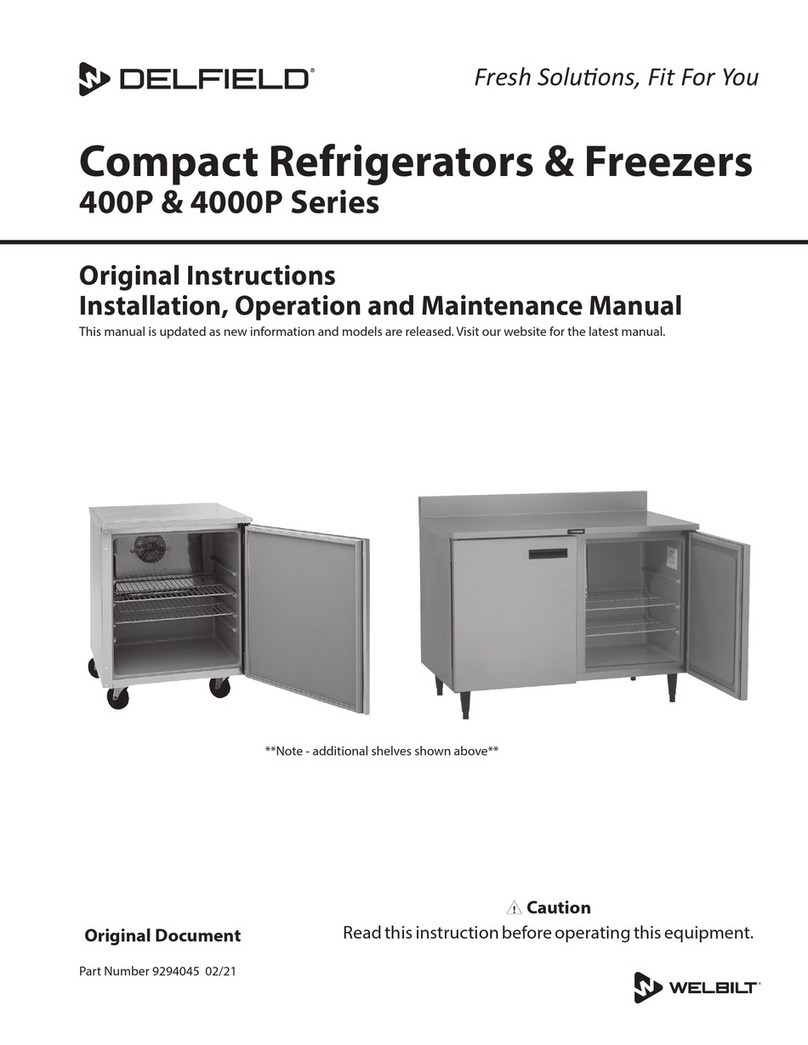
Welbilt
Welbilt Delfield 400P Series Installation, operation and maintenance manual
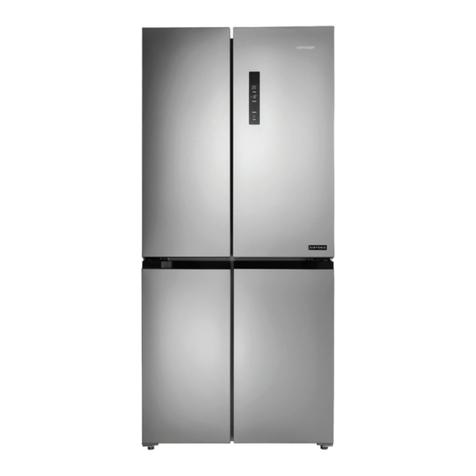
Concept2
Concept2 LA8283ss instruction manual

Universal Blue
Universal Blue UBF2221-21 user manual

